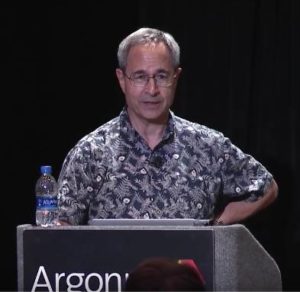In this video from ATPESC 2019, Rob Schreiber from Cerebras Systems looks back at historical computing advancements, Moore’s Law, and what happens next.
A recent report by OpenAI showed that, between 2012 and 2018, the compute used to train the largest models increased by 300,000X. In other words, AI computing is growing 25,000X faster than Moore’s law at its peak. To meet the growing computational requirements of AI, Cerebras has designed and manufactured the largest chip ever built. The Cerebras Wafer Scale Engine (WSE) is 46,225 millimeters square, contains more than 1.2 trillion transistors, and is entirely optimized for deep learning workloads.
Rob Schreiber is a Distinguished Engineer at Cerebras Systems, Inc., where he works on architecture and programming of systems for accelerated training of deep neural networks. Schreiber’s research spans sequential and parallel algorithms for matrix computation, compiler optimization for parallel languages, and high performance computer design. With Moler and Gilbert, he developed the sparse matrix extension of Matlab. He created the NAS CG parallel benchmark. He was a designer of the High Performance Fortran language. Rob led the development at HP of the PICO system for synthesis of custom hardware accelerators. He has help pioneer the exploitation of photonic signaling in processors and networks. He is an ACM Fellow, a SIAM Fellow, and was awarded, in 2012, the Career Prize from the SIAM Activity Group in Supercomputing.





